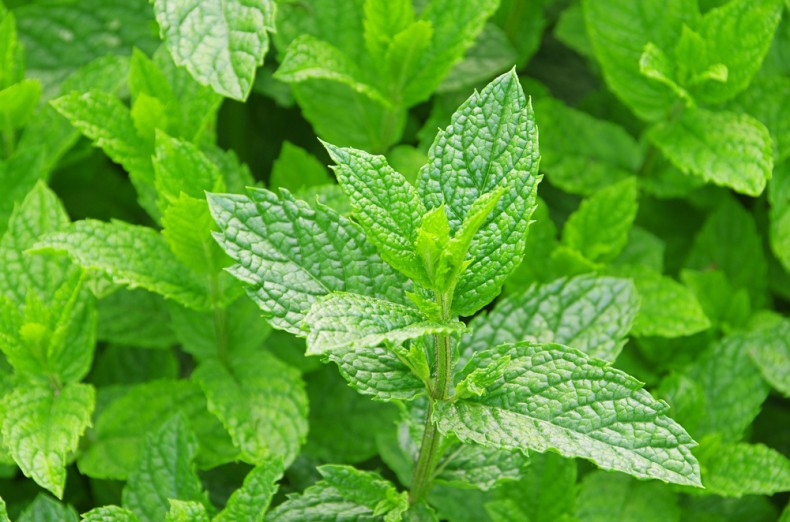
In my freezer is the last of a batch of mint chocolate chip ice cream I made early this month. The ice cream maker had lived in my kitchen since Christmas. It had been hidden in a closet for a few months before that, so its intended recipient wouldn’t see it. Now that recipient has moved out, with his ice cream maker, his clogs, and his everything else. Before he retrieved his things, I wanted to make one last batch.
I learned how to identify plants like a pro in college, when I spent two summers doing ecology research in Colorado. Then–and maybe still today–if you wanted to know a plant, the answer was in the pages of Rocky Mountain Flora. I haven’t needed to definitively identify a plant in the Rocky Mountains since 1996, but I can’t just throw away out the worn yellow paperback that I lived by for two summers. I got it down from a high shelf yesterday to remember how it works.
The book is a key, not a guidebook like you might imagine. If you want to identify something in there, you don’t flip through looking for a picture. You answer a very long series of questions while bent over a microscope in a herbarium, which is like a library filled with folders of dried plants.
If you didn’t know you were looking at a mint, you’d start with KEY F (HERBACEOUS DICOTS)—because if you’re using this book, you have at least the botany skills to know the thing in front of you is a herbaceous dicot—and start making decisions.
Flowers several to many, in heads, each flower-cluster surrounded or subtended by an involucre of bracts; ovary inferior—or Flowers not as above? If the first is true, you’re heading toward the sunflowers and teasels. Our hypothetical mint is “not as above.” Perianth none or of a single set of parts, the parts all much alike in color and texture–or Perianth present, evidently double, the outer segments (sepals) and inner segments (petals) usually conspicuously different in texture, color, or both?
Either the calyx or corolla spurred—or Flowers without a spur? On and on it goes, through more and more exotic nouns.
If you were holding a mint, you would eventually come to Ovary 4-lobed, the style arising in the center between the lobes; corolla usually distinctly zygomorphic; inflorescence various (can be heads or spikes); plants frequently with a minty odor? and turn to the key for the mint family, Labiatae, on pages 217-221.
The mint family has thousands of species that grow around the world. “What would be left of the good life if we did not have this family?” asks the author of Rocky Mountain Flora. It includes rosemary, sage, basil, marjoram, oregano, lavender, thyme, and citronella. Some we think are for toothpaste; some for repelling bugs; others for giving a scent to hand soaps.
For my last batch of mint chocolate chip, I was grumpy at the thought of giving Whole Foods money for something that is attempting to take over lawns. I put the word out on Facebook; a friend told me to stop by any time. After a brief misunderstanding with the housesitter about why I was skulking around under the kitchen window, I brought home my minty prize.
Several months ago the local science writing group toured a tiny factory in Silver Spring, Md.—just a big kitchen—that produces an ultra premium ice cream. The ice cream maker’s recipient cornered the company’s owner to ask her advice on mint chocolate chip. She recommended a bit of mint extract, to even out the flavor. But good mint extract is expensive and I have no picky customers, so I stick to the Joy of Cooking, which calls for adding a cup of chopped-up mint to the warm mix of milk and sugar and leaving it to steep, covered, for half an hour. Then I strained out the leaves, whisked in an egg, cooled it overnight, added cream, froze it in the machine, and, at the last minute, dumped in chopped-up semi-sweet chocolate.
After achieving solidity in the freezer, the resulting product is stunningly planty. Those aromatic compounds that tell you a mint is a mint are frozen into the cream. It tastes like mowing the lawn and squishing a leaf between your fingers. It tastes like summer. It has little resemblance to the consistent, perfect, predictably minty ice cream of the grocery store freezer. It’s life–full, botanical, and alive.
It’s lasted in the freezer for more than a week because I don’t want to finish it. The ice cream maker is gone now. The kitchen shelf is sitting empty, waiting for me to decide if I need a new one.
Oh my. I don’t even know where to start. Dear, dear. Well then, just this: you could line out Rocky Mountain Flora and sell it as sheer poetry.
Oh Helen! I love this.
This. This is why I am so happy I discovered this blog and the various voices which speak here. This post was a bit of Mint Chocolate Chip for the spirit. Thank you.
True friends are the spices of life. Once, I metaphor-year college student looking for a summer job. . . Great work, Helen!
And I thought, from the title, you were using chocolate mint.Yes, there is a mint which tastes of chocolate. (I used to serve vanilla ice cream with a sprig of chocmint. Alas, I can’t seem to grow it in the tropics.)
I’ve made ice cream using chocolate mint leaves from my garden and chopped dark chocolate, using much the same method as you describe. Heavenly.
Oh, wow! Chocolate mint would be a very exciting addition! (The recipient, by the way, says I am welcome to borrow the ice cream maker.)
I highly recommend doing this with lemon verbena or basil. I’ve never added chocolate. The basil comes out surprisingly minty, and both go well with strawberries on top.